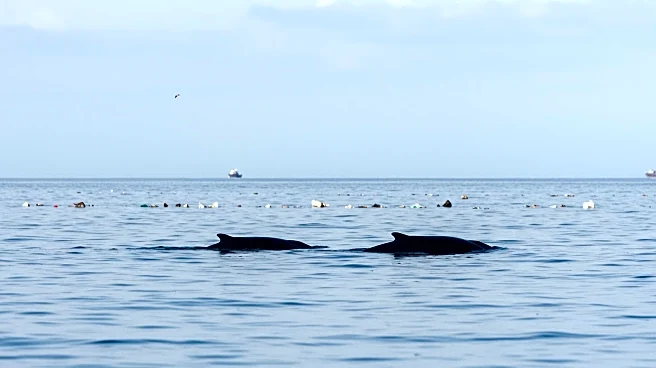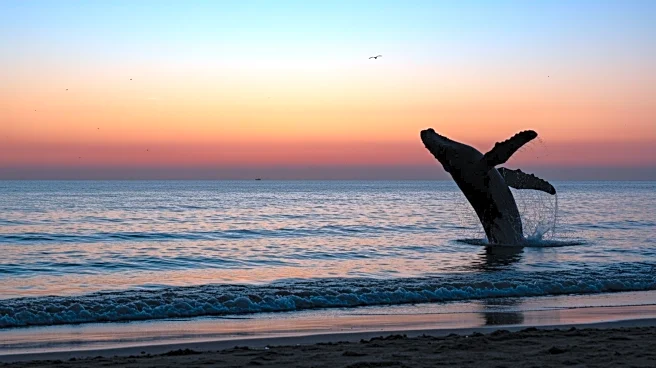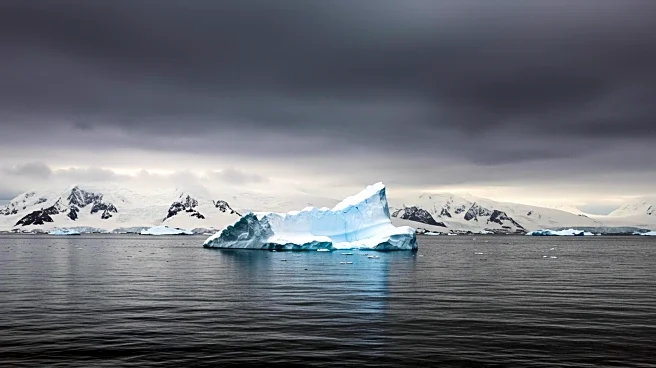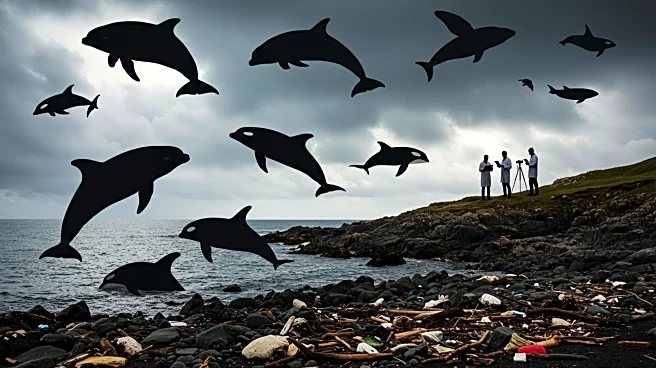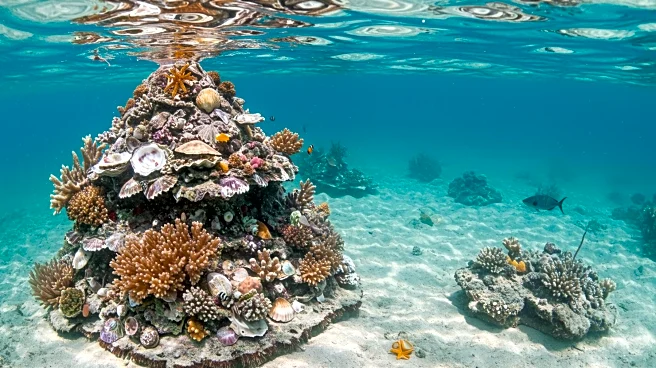What's Happening?
Southern right whales in South Australia have experienced a bumper calving season, with nearly 200 whales sighted along the state's coastline. This development is seen as a positive sign amid ongoing environmental challenges, including a harmful algal bloom affecting marine life. The whales, which migrate from sub-Antarctic foraging grounds to Australian waters for calving, have shown record numbers since 2016. Despite this positive trend, scientists caution that long-term population growth is slowing, and reproductive success is declining. The whales remain listed as endangered under federal environmental laws due to historical depletion from commercial whaling.
Why It's Important?
The increase in whale sightings offers hope for the recovery of southern right whales, a species that has been severely impacted by past commercial whaling. This positive trend could indicate resilience in marine biodiversity, despite environmental threats such as marine heatwaves and algal blooms. The health of whale populations is crucial for maintaining ecological balance and supporting marine tourism industries. However, the slowing population growth and reproductive challenges highlight the need for continued conservation efforts and monitoring to ensure the species' long-term survival.
What's Next?
Future research and monitoring are required to understand the effects of environmental changes on whale populations. Scientists will continue to track the impact of marine heatwaves and algal blooms on the whales' foraging and reproductive success. Conservationists may advocate for enhanced protection measures and policies to safeguard the whales' habitats and address broader environmental threats.
Beyond the Headlines
The ongoing environmental challenges faced by southern right whales underscore the broader impacts of climate change on marine ecosystems. The interplay between human activities, such as pollution and climate change, and marine life highlights the need for sustainable practices and policies to protect biodiversity.
